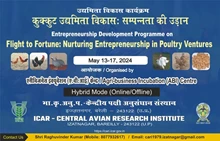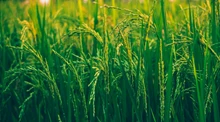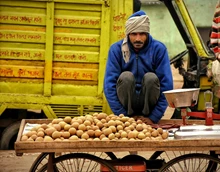
Total area sown under rabi crops has increased by 3.25% from 697.98 lakh hectares in 2021-22 to 720.68 lakh hectares in 2022-23, when compared to the area sown last year (2021-22) and normal sown area (average area of the last five years," as per ministry.
The increase in area affects all crops, with rice being the most affected. The increase in rice area is 11.20 lakh hectares, from 35.05 lakh hectares in 2021-22 to 46.25 lakh hectares in 2022-23, out of a total increase of 22.71 lakh hectares in all rabi crops.
This is, however, less than the normal sown area of 47.71 lakh hectares. Telangana and West Bengal have seen the greatest increase in rice area. Rice land is being converted to low-water-use oilseeds, pulses, and nutri-cereal crops. Concerning the increase in crop cultivation, Union Minister of Agriculture and Farmers Welfare Narendra Singh Tomar stated that it is the result of the combined efforts of our toiling farmer brothers and sisters, agricultural scientists, and the Modi Government's farmer-friendly policies. "The government's priority is to increase oilseed production in order to reduce reliance on imported edible oils. The country will have to import 142 lakh tonnes of edible oils at a cost of Rs.1.41 lakh crore in 2021-22.
Oilseed area increased by 7.31% from 102.36 lakh hectares in 2021-22 to 109.84 lakh hectares this year, owing to a renewed emphasis on oilseeds." Tomar added that this represents a 31.03 lakh hectare increase over the normal sown area of 78.81 lakh hectares. "The increase in area under oilseeds at the rate of 7.31% is more than double the rate of increase of 3.25% in all crops together. Rajasthan, Madhya Pradesh, and Chhattisgarh saw significant growth in oilseed area." During the rabi season, rapeseed and mustard contribute the most to an increase in oilseed area.
Mustard area increased by 6.77 lakh hectares between 2021-22 and 2022-23, from 91.25 lakh hectares to 98.02 lakh hectares. "Out of 7.49 lakh hectares increase in area under oilseeds, rapeseed & mustard alone accounted for 6.44 lakh hectares. Rapeseed and mustard cultivation area is 54.51% greater than the normal sown area of 63.46 lakh hectares. "Over the last two years, the Special Mustard Mission has resulted in significant area expansion," the ministry stated.
Pulse production is being prioritized in order to make India self-sufficient in these commodities. A special programme (NFSM 'TMU370') was launched under the National Food Security Mission to increase productivity in 370 districts where pulse yields were lower than the state average due to a lack of good seed and technological interventions.
"The area under pulses increased by 0.56 lakh hectares, from 167.31 to 167.86 lakh hectares. Mung bean and lentil accounted for the increase in pulse area. Under 'TMU370,' approximately 4.04 lakh seed minikits of HYVs were distributed to farmers free of charge for lentil. "States such as Maharashtra, Odisha, Rajasthan, and Karnataka have taken the lead in increasing the area under pulse cultivation," the ministry added.
As part of 'Aatmanirbhar Bharat,' the government has focused on increasing crop productivity across the board, with a particular emphasis on crops where demand is met through costly imports, such as oilseeds and pulses, and millets, whose demand will skyrocket following the International Year of Millets. "The increased area brought under rice, oilseeds, pulses and nutri-cereals, along with higher productivity due to use of HYV seeds, will bring a milestone in foodgrain production in the country. This will result in pulse self-sufficiency, reduced imports of edible oils, and meeting global millet demand," the ministry stated.











